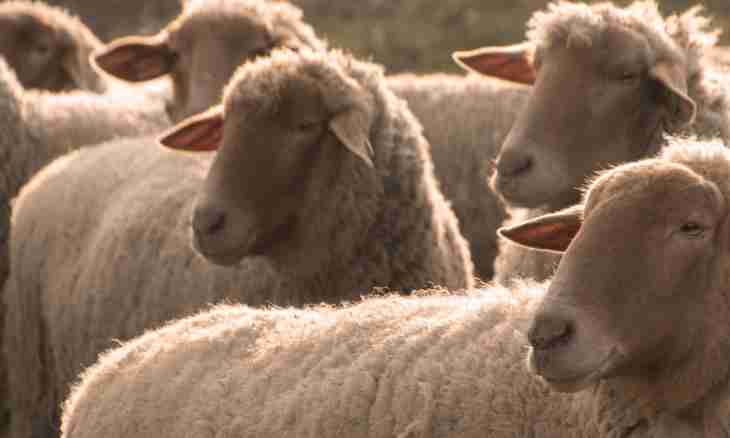Sheep milk not only, meat, but also wool. The special praise is deserved by specially dressed skin - sheepskin. Such efficiency of animals is maintained them by a special diet of forages: in it is 1.5-2 times more than plant species, than at other herbivores. Monotonous food for sheep is extremely undesirable, and here good leaving and full feeding yield very good result.
Instruction
1. It is considered that sheep eat not a lot of forage. Its volumes most often are defined at the rate on each 100 kg of live weight. If it is dry feeds at stall contents, then the portion of a forage in the specified proportion averages from 2nd to 3 kilograms. At summer feeding on pastures - a rate on self-regulating consumption. Here the main thing - quality of natural and cultural reservations: the choice of steppe and sukhodolny pastures is preferable (crude and boggy meadows - the worst option).
2. In the main diet of sheep: a green grass, bean (is more valuable in a budding phase), cereal cultures (is more nutritious in the period of the beginning of a kolosheniye), hay, straw, a silo, the concentrated forages, vegetables, mineral additives. Types of forages should be combined, and such complex food will fully satisfy animals in all necessary substances. The young green grass of pastures and fresh forage crops contain proteins, vitamins, sugar, proteins. At growth and aging these plants lose the useful substances, gathering more cellulose. It is digested sheep more difficultly.
3. The silo, including corn is good for feeding of sheep. It is enough 3-4 kg a day on one sheep. A fine forage for animals - hay with various structure of the herbs collected at the time of the beginning of blossoming. The nutritiousness of such hay is twice higher than what is dried up from herbage in a phase of maturing of seeds. Alfalfa hay is considered the best, it on value is followed by clover hay, hay of a cock's head and cereals. Feed to sheep and the straw which is dried up from bean cultures (most valuable) and from summer (oats, barley, peas, a millet). The concentrated forages is a grain bean and cereal, bran, cake, compound feeds. The last are quite expensive, but are very nutritious as they except traditional components of a sheep forage contain starch and fats.
4. It is useful to give to sheep juicy forages: potatoes (crude or boiled), carrots, fodder beet, melon cultures - pumpkin, a squash, watermelons. For a day diet of adult sheep 2-3 kg of the crushed root crops there are enough, 1 kg will be enough for young growth.
5. Meal (from sunflower, a cotton, soy) is also rich with a protein and mineral salts. It is used economically as additive: up to 150 grams on the head in day. Sheep need calcium and phosphorus: their shortcoming is compensated by inclusion in a diet of bone meal, the chalk defluorinated and trikaltsiyevy phosphate, plain phosphate. Annual requirement - from 1, 5 to 2 kg of bone meal and chalk on one sheep.
6. It is important in catering services of sheep of the technician of feeding. During the day they have to receive two-three grades of rough forages (hay, straw), and separately and at different times. Juicy forages are consumed to a poyeniye and before rough sterns. Concentrated are given after a watering place (it will be organized once a day in the winter, 2-3 times in the summer). Salt has to be present at feeding troughs constantly. Obligatory giving salt - 10-15 g a day.
7. Stall feeding surpasses in duration pasturable is on average 210 days in a year. It is necessary to consider also such moment. With seasonal impoverishment of nutritiousness of herbage on pastures the supplementary feeding of sheep by a dry feed before pasture is required - to half a kilogram on the head in day. If necessary the additional portion is given also in the evening after return of animals to a stall.

